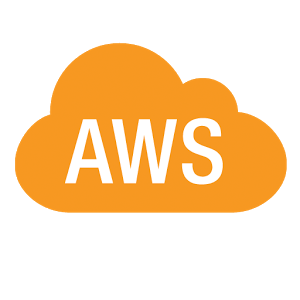Amazon Web Services – Free Tier

How to get started with AWS free?
Just go to http://aws.amazon.com/free/ and make your account.
Credicard will be needed even for a free account.
What can be done with the free account?
It’s up to you! If you are going to make a light traffic website free tier can handle it. 🙂
You can have up to two EC2 instances (1 Linux, 1 Windows) with 613M Ram and up to 30GB EBS Size. You can go with all your 30GB on a Linux instance it’s the best way to spend your ‘free’ resources. (Windows is memory hungry.)
You can have up to one RDS instance (postgres, mysql, …) with 20GB of DB storage and 20GB for backups.
You can have up to one S3 with 5GB of storage with up to 20k put and 20k get requests.
You can have up to one Memcached server with 213MB
And some more things (ELB, DynamoDB, SNS, CloudWatch, …)
AMI
It’s an system imagem, like an ubuntu iso. Or an image of your running machine.
EC2
Amazon EC2 (Amazon Elastic Compute Cloud) is a web service that provides resizable compute capacity in the cloud. It is designed to make web-scale computing easier for developers. The AWS Free Tier includes 750hrs of Linux and Windows Micro Instances each month for one year.
It’s your machine.
EBS
Amazon EBS (Amazon Elastic Block Store) provides highly available, highly reliable, predictable storage volumes that can be attached to a running Amazon EC2 instance. With the AWS Free Tier you get 30 GB of Amazon EBS, plus 2 million I/Os and 1 GB of snapshot storage.
It’s your disk space.
You should know that EBS is conneted to EC2 by network, local ephemeral disk are shared with other users.
RDS
Amazon RDS (Amazon Relational Database Service) makes it easy to set up, operate, and scale relational databases in the cloud. Amazon RDS supports MySQL, Oracle and Microsoft SQL Server database engines. The AWS Free Tier includes 750 hours of Amazon RDS – enough hours to run a DB Instance continuously each month.
It’s your database server, it’s better to use one RDS than install mysql or postgresql inside your EC2. Because here you get automatic update, 20GB more space in the free tier and it’s easier to maintain scalability.
S3
Amazon S3 (Amazon Simple Storage Service) provides a simple web services interface that can be used to store and retrieve any amount of data, at any time, from anywhere on the web. It gives any developer access to the same highly scalable, reliable, secure, inexpensive infrastructure that Amazon uses to run its own web sites.
It’s where you can store your static files.
ElastiCache
Amazon ElastiCache makes it easy to set up, operate, and scale in-memory caches in the cloud. Amazon ElastiCache supports Memcached, a widely adopted caching protocol. The AWS Free Tier includes 750 hours of Amazon ElastiCache – enough hours to run a Cache Node continuously each month.
It’s your memcached server.
ELB
Amazon Elastic Load Balancing distributes incoming application traffic across multiple Amazon EC2 instances, providing greater fault tolerance and scalability. The AWS Free Tier includes 750 hours of load balancing and 15 GB of data processed.
I never used this, seems good when you have one linux and one windows EC2.
DynamoDB
Amazon DynamoDB is a fully managed NoSQL database service that provides fast and predictable performance with seamless scalability. With the AWS Free Tier you get 100 MB of storage, 5 units of write capacity, and 10 units of read capacity for Amazon DynamoDB.
I never used this.
SNS
Amazon SNS (Amazon Simple Notification Service) is a web service that makes it easy to set up, operate, and send notifications from the cloud. It provides developers with a highly scalable, flexible, and cost-effective capability to publish messages from an application and immediately deliver them to subscribers or other applications.
You will use it with CloudWatch.
CloudWatch
Amazon CloudWatch provides scalable monitoring for AWS cloud resources and applications. It helps developers and system administrators gain visibility and insight to operate their systems. Use metrics to store monitoring data. Use alarms to trigger automated actions from your metrics.
CloudWatch is the service that will check everything, including your bill! Make one notification in case your EstimatedCharges > 0 for 1 minute. With that you know when you made something wrong.
Comments are Disabled